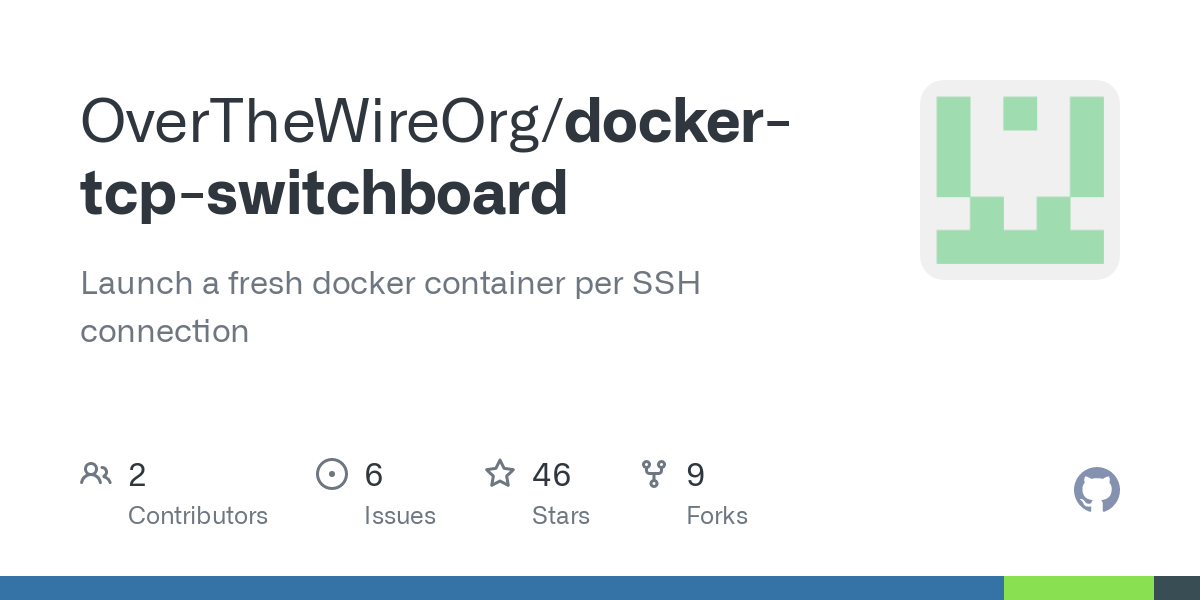- 6 Posts
- 100 Comments

 1·7 days ago
1·7 days agoOn my samsung phone I can… for now.
Edit: oh, by android distributions I meant the varkous variants put on devices by manufacterers.
Custom roms probably wouldn’t have these restrictions.

 3·7 days ago
3·7 days agohttps://www.reddit.com/r/termux/comments/1gks9mf/announcement_termux_broken_on_android_15_for/
https://www.reddit.com/r/oneplus/comments/1go55ow/termux_is_now_officially_dead_for_oneplus_and/
Termux is broken on oneplus devices.
This means winlator, and other similar termux based projects will no longer work.
In addition to that, other Android distributions have also moved “child process limit” to developer options, which may forebode them removing it, and breaking termux entirely. This is pretty scary IMO.
Debian already has docker packaged. That’s more convenient.
Debian with the docker convenience script.
They seem to be moving away from this, and it’s not longer the first option on their install page
On their debian page
Use a convenience script. Only recommended for testing and development environments
Also, it should be noted about the first option they recommend, Docker Desktop, that Docker Desktop is proprietary.
I recommend just getting the
docker.ioanddocker-composefrom debian’s repositories.

 19·7 days ago
19·7 days agoUbuntu in WSL comes with systemd enabled. Debian doesn’t, and you have to enable it yourself.
That’s why I chose to have people use Ubuntu in WSL, despite the other downsides. One less step to setup a Linux environment on Windows makes the process smoother.

 4·7 days ago
4·7 days agoOP seems to be trying to install older projects, rather than creating a new project.

 171·15 days ago
171·15 days agoOne lgbtq+ streamer I know dual streams to owncast
The directory is a list of live owncast streams.
Also, you should be able to chat on owncast streams with fediverse accounts, but the last time I tried, I wasn’t able to log log in with my lemmy account.

 8·17 days ago
8·17 days agoThe whole point of it is that in a truly random system all known patterns should eventually emerge somewhere within it.
So pi (probably) has this property. There are some joke compression programs around this (they don’t really work because it takes up more space to store where something in pi is, than storing the thing itself). But it is funny, to think that pi could theoretically hold every past, present, and future piece of information within those digits after the decimal.
https://github.com/philipl/pifs
https://ntietz.com/blog/why-we-cant-compress-messages-with-pi/

 2·26 days ago
2·26 days agoMaybe Whisper? This github repo: https://github.com/linto-ai/whisper-timestamped
Says thay whispher can do timestamps on speech segments. However, I don’t know if that’s what you want, since whispher might only be able to do that if it is transcribing the actual audio, rather than editing another text file.
For example: https://api.isevenapi.xyz/api/iseven/7
{ "ad": "FOR SALE - collection of old people call 253-555-7212", "iseven": false }Not exactly like the title.

 27·1 month ago
27·1 month agoStallman doesn’t seem to get that pedophilia is wrong because of the hierarchy of power, and the power imbalances between older/younger people, not because of some inherent wrongness about being attracted to a prepubescent person. This is shown by how he condemns some pedophilia, but is accepting of 12+/past puberty. (I despise this logic, because it would also make gay sex and sodomy wrong, as well).
I find this deeply ironic, because his primary issue with proprietary software is the way that it gives developers levels of power over users. From his article Why Open Source Misses the Point
But software can be said to serve its users only if it respects their freedom. What if the software is designed to put chains on its users? Then powerfulness means the chains are more constricting, and reliability that they are harder to remove.
You would expect someone who is so in tune with the hierarchies that appear with software developers, publishers, and users, to also see those same hierarchies echoed in relationships between people of vastly different ages, but instead, we get this. I’m extremely disappointed.
These failures to understand hierarchy and power, are exactly why Stallman shouldn’t be in a position of power. Leaders should continually prove that they understand hierarchy and the effects of their actions on those below them. Someone who doesn’t understand how their power could affect another, shouldn’t be a leader.

 1·2 months ago
1·2 months agoNo, I think if you’re using the nextcloud all in one image, then the management image connects to the docker socket and deploys nextcloud using that. The you could be able to update nextcloud via the web ui.
https://github.com/nextcloud/all-in-one?tab=readme-ov-file#how-to-update-the-containers
So, officially no. But there are ongoing theories in the r/emulationonandroid subreddit that they are.
I think it could be either way, but it’s unlikely that they are the same person. In both cases, harassment caused them to shut there projects down, which could be a reasanobale coincidence, or could be indicative of a larger harassment campaign.

 2·2 months ago
2·2 months agohttps://wiki.archlinux.org/title/List_of_applications/Internet#Pastebin_services
That pages shows how to use curl to upload to 0x0.st.
I’ve used the pastebinit program listed on that page to upload to paste.debian.net, but it supports other sites as well.
Because forgejo’s ssh isn’t for a normal ssh service, but rather so that users can access git over ssh.
Now technically, a bastion should work, but it’s not really what people want when they are trying to set up git over ssh. Since git/ssh is a service, rather than an administrative tool, why shouldn’t it be configured within the other tools used for exposes services? (Reverse proxy/caddy).
And in addition to that, people most probably want git/ssh to be available publicly, which a bastion host doesn’t do.

 1·2 months ago
1·2 months agoSo, I’m not gonna pretend flatpak doesn’t use more space then normal apps, but due to deduplication (and sometimes filesystem compression), flatpaks often use less space than people think.
[nix-shell:~/Playables/chronosphere]$ sudo /nix/store/xdrhfj0c64pzn7gf33axlyjnizyq727v-compsize-1.5/bin/compsize -x /var/lib/flatpak/ Processed 49225 files, 21778 regular extents (46533 refs), 22188 inline. Type Perc Disk Usage Uncompressed Referenced TOTAL 53% 898M 1.6G 3.6G none 100% 499M 499M 1.0G zstd 34% 399M 1.1G 2.6G [nix-shell:~/Playables/chronosphere]$ du -sh /var/lib/flatpak/ 1.7G /var/lib/flatpak/I only have one flatpak app installed, and
dusays that takes up 1.7 GB of space… but actually, when using a tool that takes up BTRFS transparent compression into account, only half of that space is used on my disk.I recommend using compsize for a BTRFS compression aware version of
duandflatpak-dedup-checkerfor a flatpak filesystem deduplication aware checker of space used.I think flatpak absolutely does use up more space, because yes, it is another linux distro in your distro. But I think that’s a tradeoff people accept in order to have a universal package manager for graphical apps.
Also, you can flatpak cli tools. They are just difficult to run at first because you have to do the
flatpak run org.orgname.appnamething, but you can alias that to a short command. Here is a flatpak of micro, a terminal based text editor.(I prefer nix for cli tools though, and docker/podman/containers for services).

 2·2 months ago
2·2 months agoSo based on what you’ve said in the comments, I am guessing you are managing all your users with Nixos, in the Nixos config, and want to share these users to other services?
Yeah, I don’t even know sharing Unix users is possible. EDIT: It seems to be based on comments below.
But what I do know is possible, is for Unix/Linux to get it’s users from LDAP. Even sudo is able to read from LDAP, and use LDAP groups to authorize users as being able to sudo.
Setting these up on Nixos is trivial. You can use the users.ldap set of options on Nixos to configure authentication against an external LDAP user. Then, you can configure sudo
After all of that, you could declaratively configure an LDAP server using Nixos, including setting up users. For example, it looks like you can configure users and groups fro the kanidm ldap server
Or you could have a config file for the openldap server
RE: Manage auth at the reverse proxy: If you use Authentik as your LDAP server, it can reverse proxy services and auth users at that step. A common setup I’ve seen is to run another reverse proxy in front of authentik, and then just point that reverse proxy at authentik, and then use authentik to reverse proxy just the services you want behind a login page.





Old post, but if you connect your phone to your PC using bluetooth, you can play audio through your phone, at least this works for me on KDE plasma. I use this to continue listening to music/podcasts from my phone without having to set up any sort of sync solution.
Previously, I was usin scrcpy, an adb based solution to route audio from my phone to my computer.